H Type Carburetter: Tuning (Single Carbs)
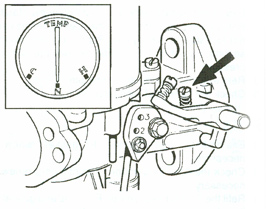
1
(a) Warm engine up to normal temperature.
(b) Switch off engine.
(c) Unscrew the throttle adjusting screw until it is just clear of its stop and the throttle is closed.
(d) Set throttle adjusting screw 1.5 turns open.
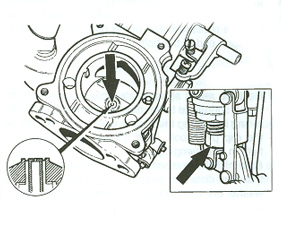
2
(a) Mark parts for reassembly and remove piston/suction chamber unit.
(b) Disconnect mixture control wire.
(c) Screw the jet adjusting nut until the jet is flush with the bridge of the carburetter or fully up if this position cannot be obtained.
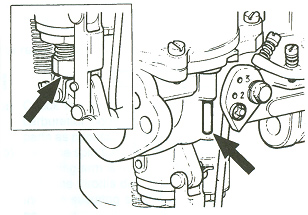
3
(a) Replace the piston/suction chamber unit as marked.
(b) Check that the piston falls freely onto the bridge when the lifting pin is released. If not, see page 7.
(c) Turn down the jet adjusting nut 1.5 turns.
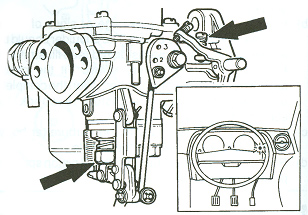
4
(a) Restart the engine and adjust the throttle adjusting screw to give desired idling as indicated by the glow of the ignition warning light.
(b) Turn the jet adjusting nut up to weaken or down to enrich until the fastest idling speed consistent with even running is obtained.
(c) Re-adjust the throttle adjusting screw to give correct idling if necessary
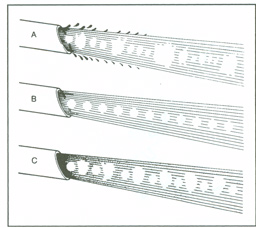
5
The effect of mixture strength on exhaust smoke
A. TOO WEAK: Irregular note, splashy misfire, and colourless.
B. CORRECT: Regular and even note.
C. TOO RICH: Regular or rhythmical misfire, blackish
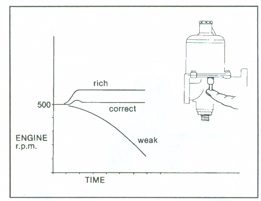
6
(a) Check for correct mixture by gently pushing the lifting pin up about 0.8 mm (1/32 in).
(b) The graph illustrates the effect on engine r.p.m. when the lifting pin raises the piston, indicating the mixture strength.
RICH MIXTURE: r.p.m. increase considerably.
CORRECT MIXTURE: r.p.m. increase very slightly.
WEAK MIXTURE: r.p.m. immediately decrease
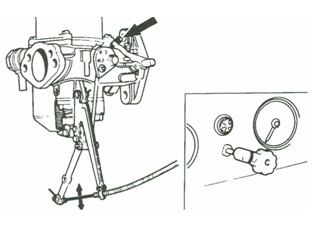
7
(a) Reconnect the mixture control wire with about1.6 mm (1/16 in) free movement before it starts to pull on the jet lever.
(b) Pull the mixture control knob until the linkage is about to move the carburetter jet and adjust the fast-idle screw to give an engine speed of about 1,000 r.p.m. when hot.
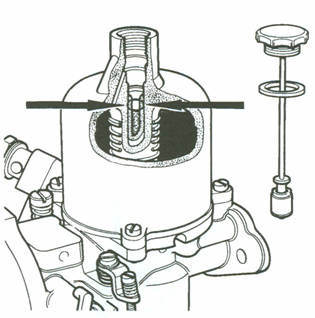
8
Finally top up the piston damper with thin oil of grade S.A.E. 20 until the level is just below the top of the hollow piston rod.





